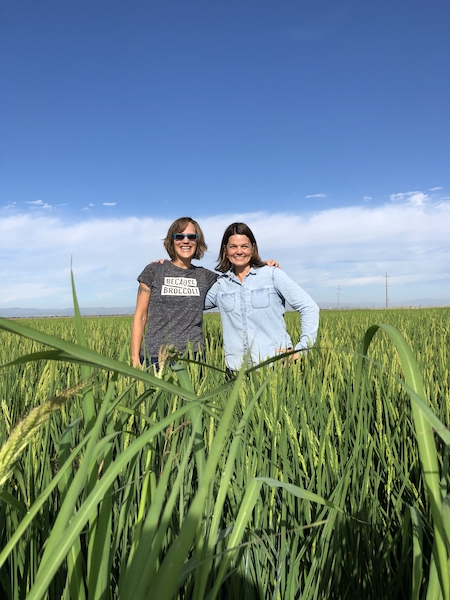Third Generation Rice Farmer Protects Fish & Birds
By Amber K. Stott
Kim Gallagher arrives ready to work. It’s early, but the undiluted California sun is already fierce, drying the twinkling dew from the maturing rice plants. Our voices startle egrets, herons, and other waterfowl from their peaceful morning feeding. A frog plops into the still water. The view stretches waist-high in emerald from the healthy crops, topped with an endless aqua sky. This is Sacramento Valley rice country.
Becoming a Rice Farmer
The Sacramento region grows ninety-five percent of California’s rice crop. Gallagher is the third generation in her family to grow it. She started her career as a high school biology teacher, never planning to be a farmer like her dad or her grandpa. But when her father was diagnosed with cancer, she fearlessly pulled on her muck boots and jumped feet-first into the new life. She’s been a farmer now for ten years.
Gallagher has never met a challenge she couldn’t surmount, giving her the right attitude and grit to succeed in the unpredictable world of growing food.
“I can adapt. I don’t quit. I’m going to keep going,” says Gallagher. She uses the same mindset on and off the rice field, raising two teenage boys and running marathons. She’s unstoppable, curious, and funny. She’s also committed to improving the planet.

Protecting Nature
Gallagher and other rice growers are watching an experimental salmon project with great interest. It involves multiple partners, such as UC Davis and the California Department of Fish and Wildlife. It won’t benefit her farm directly, but it could help heal an endangered salmon species, so she follows the project’s progress. California rice farmers, including her dad and neighboring farmers, have a legacy of partnering on wildlife projects.
Rice grows in five inches of water throughout the summer season, creating replacement habitats for birds in a state that has lost 90 percent of its natural wetlands. Most rice farmers, like Gallagher, embrace their secondary role as caretakers to the birds’ waterways, so it’s a natural bridge for the field to become healthy habitat for fish.
Many California rivers have levees that disconnect them from their floodplains and contribute to the decline in salmon populations. Floodplains create safe places for juvenile salmon to feed and grow as they prepare to migrate out to the Pacific Ocean, where they will continue to grow into healthy adults. If rice fields can act as a proxy for river floodplains, creating havens and a source of food, the farmers can simulate natural processes to restore salmon populations.
It’s complicated stuff, but for a former high school biology teacher, it’s a real-world science experiment to which she can meaningfully contribute.
“I didn’t think this is what I was going to do. There weren’t a lot of women out there doing it, so it didn’t seem like an option,” Gallagher recalls. “But I got bit. I fell in love with it. I really like being out here. This is the best part of my day–the part where I get to go out and be in the field and the wildlife.”

Photo credit: Amy Nicole
Amber K. Stott is CEO and chief food genius of the nonprofit Food Literacy Center, inspiring kids to eat their veggies. She’s a food writer and has been named a “Food Revolution Hero” by Jamie Oliver Food Foundation, a “Food Hero” by Food Tank, and a TEDx Sacramento Changemaker Fellow





